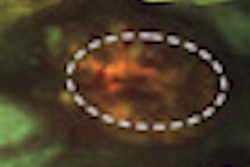Chemical luminescence can aid in the visualization of oral leukoplakias, according to a study in the Journal of Oral Pathology and Medicine (August 2011, Vol. 40:7, pp. 541-544).
Following oral examinations, researchers from King's College London Dental Institute evaluated the accuracy of chemiluminescence in detecting oral potentially malignant disorders using a commercially available detection kit (ViziLite, Zila). Data derived were compared in relation to conventional oral examination and surgical biopsy.
The study included 126 patients (70 men and 56 women, mean age 58.5 ± 11.9 years) with oral white, red, and mixed white and red patches. Sixty-one patients were current smokers, 28 were ex-smokers, and 92 were alcohol users. All patients underwent ViziLite examination followed by surgical biopsy.
Based on the clinical diagnosis, 70 patients had oral leukoplakia/erythroplakia, 32 had oral lichen planus, nine had chronic hyperplastic candidiasis, and the rest had frictional keratosis (13) or oral submucous fibrosis (2), the researchers reported. Of the 126 lesions, 95 (75.4%) showed aceto-whitening.
Most oral leukoplakias had enhanced visibility and sharpness of the lesion when viewed with the ViziLite system, the researchers noted.
Following biopsy, the researchers found that 44 patients had oral epithelial dysplasia. The sensitivity and specificity of chemiluminescence for detecting a dysplastic lesion were 77.3% and 27.8%, respectively.
While ViziLite has the ability to detect oral potentially malignant disorders, it does not accurately delineate dysplastic lesions, the study authors concluded. However, "the device can be used as a general oral mucosal examination system and may in particular improve the visualization of leukoplakias," they added.



















